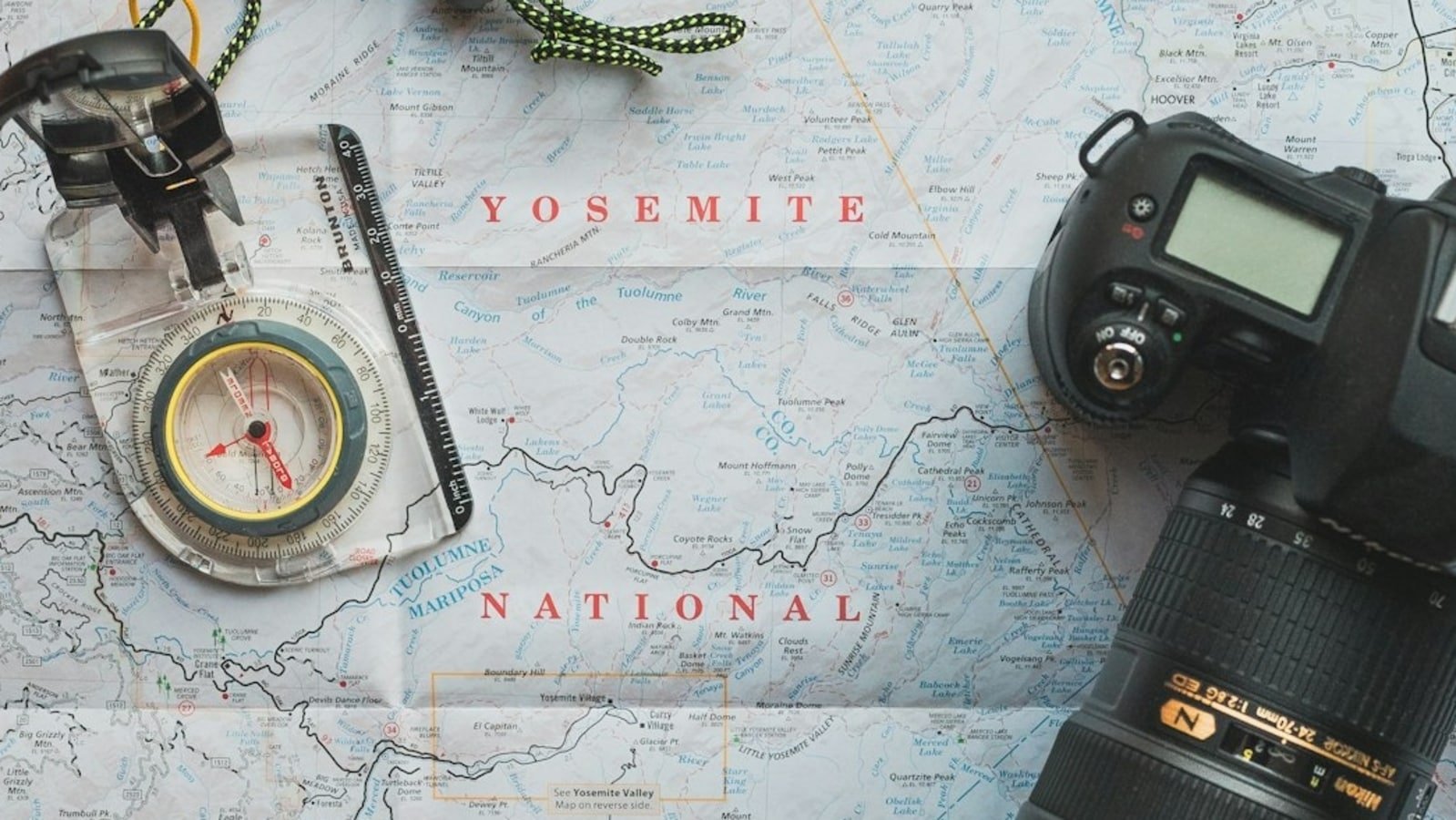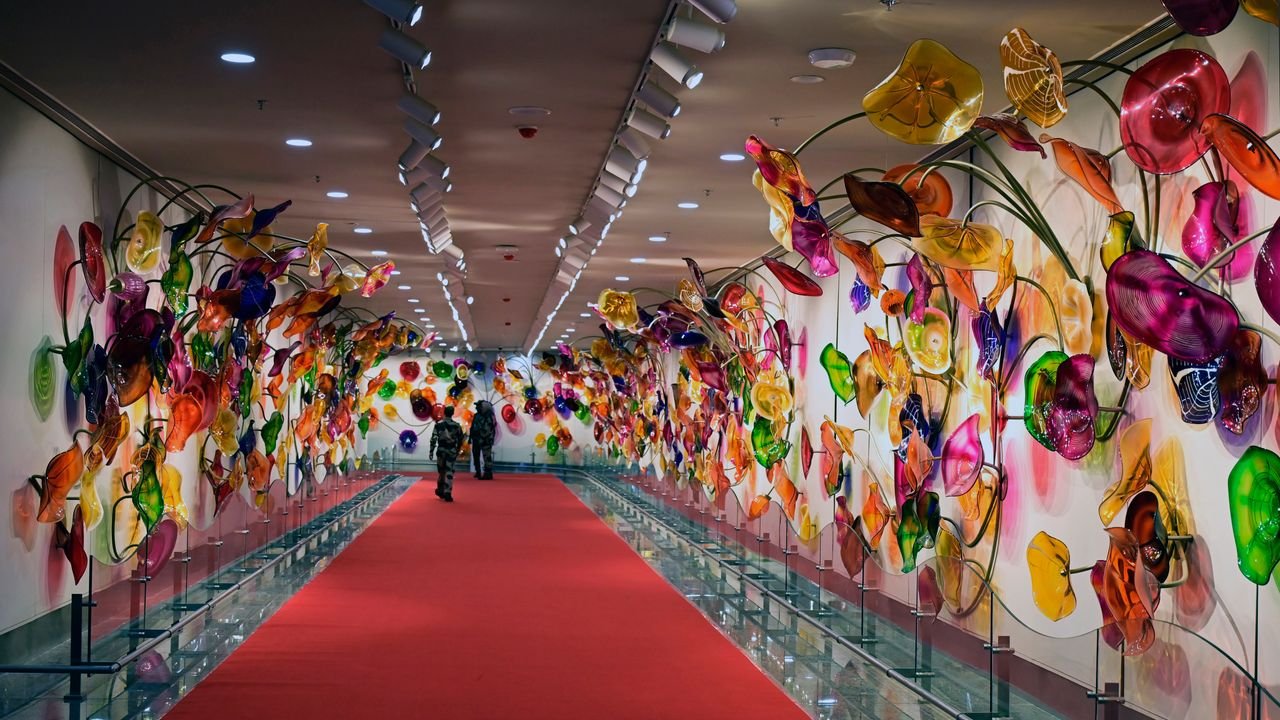Travel Guides & Articles
US has a ‘Do Not Travel’ warning for 21 countries – Here’s a complete list

As summer vacation approaches, the US has issued a ‘Do Not Travel’ warning for as many as 21 countries. These include Russia, Ukraine, Iran, and even Iraq. The State Department has four levels of advisories, with ‘Do Not Travel’ the most serious. Some of the advisories have been issued for months, while others are fairly recent.
Level 1: Exercise Normal Precautions
This applies to safe tourist spots like Japan, Bermuda, and the Cayman Islands, urging travelers to stay vigilant despite no specific threats.
Level 2: Exercise Increased Caution
Travelers should be wary in countries like Saudi Arabia, China, and Spain, where risks include crime, civil unrest, or potential terrorism, but travel is still feasible with caution.
Read More: Donald Trump on fallout from trade war: ‘US kids may get 2 dolls instead of 30’
Level 3: Reconsider Travel
This warning covers 23 countries, such as Chad, Niger, Egypt, Jamaica, and Colombia, where serious risks like crime, unrest, or terrorism make travel dangerous.
Level 4: Do Not Travel
The most severe advisory applies to 21 countries with extreme dangers, including active conflicts, targeted crimes against foreigners, or hostile governments. These are:
Afghanistan, Belarus, Burkina Faso, Burma, Central African Republic, Democratic Republic of the Congo, Haiti, Iran, Iraq, Lebanon, Libya, Mali, North Korea, Russia, Somalia, South Sudan, Sudan, Syria, Ukraine, Venezuela, and Yemen.
Read More: US Supreme Court showdown over religious charter school begins
The ‘Do Not Travel’ advisory also applies to some Mexican states: Colima, Guerrero, Michoacan, Sinaloa, Tamaulipas, and Zacatecas. These advisories are due to crime and kidnapping, as is Gaza, due to the ongoing conflict.
The US State Department also urged travelers to:
- Enroll in the Smart Traveler Enrollment Program (STEP) to receive Alerts and make it easier to locate you in an emergency.
- Follow the Department of State on Facebook and X/Twitter.
- Review the Country Security Report for Canada.
- Prepare a contingency plan for emergency situations. Review the Traveler’s Checklist.
Travel Guides & Articles
Now, you can skip long immigration queues at 13 airports across India

India’s Fast Track Immigration – Trusted Traveller Programme (FTI-TTP), launched earlier this year to speed up and simplify immigration clearance for travellers, has now been rolled out to five more airports across the states of Uttar Pradesh, Punjab, Kerala and Tamil Nadu.
The programme was first introduced at Terminal 3 of Delhi’s Indira Gandhi International Airport in June 2024, before expanding to seven other major hubs in January 2025: Mumbai, Chennai, Kolkata, Bengaluru, Hyderabad, Cochin, and Ahmedabad. It aims to provide Indian nationals and Overseas Citizens of India (OCI) cardholders with a faster, smoother, and more secure immigration process for international departures and arrivals.
With the addition of Lucknow, Amritsar, Thiruvananthapuram, Tiruchirappalli, and Kozhikode airports, the service is now available at 13 airports across the country. The government has also announced plans to include the upcoming Navi Mumbai and Jewar (Noida) airports once they are operational.
What is the FTI-TTP?
The Fast Track Immigration Programme is a government initiative that speeds up immigration clearance for Indian nationals and OCI cardholders, offering a quick and more secure process for pre-verified travellers. It saves time by letting pre-verified travellers use dedicated e-gates, where biometrics and travel details are checked automatically, no long queues or manual stamping required.
How to sign up for the Fast Track Immigration Programme:
- Travellers must fill in the necessary details on the official website here. FTI-TTP registration will be valid for up to five years or until the passport expires, whichever comes first.
- After filling in the details on the website, and submitting them for verification with the Bureau of Immigration, applicants will receive a message to schedule an appointment for biometric data submission.
- Biometrics can be provided at designated international airports in India or the nearest Foreigners Regional Registration Office (FRRO). Submitting biometrics is mandatory to complete the application process.
- Applicants must ensure their passports are valid for at least six months when applying for the FTI-TTP. Membership will be linked to the passport’s validity.
The programme’s second phase, which extends benefits to foreign travellers holding OCI cards, also begins today. The long-term goal is to offer fast and secure immigration facilities and a more seamless travel experience for all eligible passengers.
Travel Guides & Articles
India’s Festive Cities You Need To Visit This Season | Travel

India’s Festive Cities You Need To Visit This Season (Image Credit: Canva)
Between the months of September and November, India goes straight into full-on festive mode, where temples, streets, homes, and even palaces light up, the food stalls smell irresistible, and every corner of the country feels alive in celebration. If you are wondering where to go to soak in the magic, then here is a list of cities that truly bring the festivals to life.
Mysuru: Royal Glow of Dasara
Mysuru during the Dasara festival feels straight out of a grand old tale. The palace sparkles with thousands of lights, and the procession is almost royal with elephants and folk dances, and cultural programs that will fill the city and your heart with life. If you want a festival that feels royal and deeply rooted in history, then this is your place.
Ahmedabad : The Navratri Energy
When Navratri hits, Ahmedabad turns into one massive dance floor where the nights are packed with people wearing colourful traditional outfits and doing garba and dandiya. The food stalls are buzzing with jalebis, fafda, and soft dhoklas. This city doesn’t just celebrate Navratri, it lives it.
Jaipur : Heritage Meets Festival
The Pink City already looks like it is in a festival mood all year-round, but come Diwali and Navratri, and you can see Jaipur level up with the local markets packed with shoppers. Palaces and forts glow under the golden lights, and every corner feels alive with traditional music, laughter, and beloved sweets.
Varanasi: Divine Energy on the Ghats
In Varanasi, Navratri feels spiritual and spectacular at the same time, and the ghats come alive with lamps and rituals, the sound of devotional music fills the atmosphere, and the boat rides under the flickering light feel almost unreal. Festivals in Varanasi aren’t just events; they are experiences that stay with you forever.
Kolkata : The Heart of Durga Puja
No city does Durga Puja like Kolkata. From pandals with breathtaking and jaw-dropping themes to traditional bhog meals, the celebrations are larger than life, and the entire city feels like one big family that has come together for the celebration of these auspicious festivals. And the food scene, from rasgullas to mishti doi, only makes it all better.
Delhi: Lights, Melas & Fireworks
Delhi is one city that goes all out during Dussehra and Diwali with huge-scale Ramleela performances, bustling festive markets, sweet shops working overtime and overflowing with sweet treats and traditional mithai, fireworks lighting up the skies; the city is a complete festive package. This is the perfect place to be if you like a mix of tradition and modern fun.
Goa : Beach Meets Festive Buzz
Do you think Goa is only meant for parties? Visit this place in the festive season, and you will see a whole new side. Temples are decorated, local feasts show up with a mix of flavours, and beaches get livelier post the monsoon season. It is the perfect blend of chilling and celebrating.
Kerala: Post-Onam Charm
Even after Onam officially wraps up, Kerala holds on to its festive energy with snake boat races, traditional performances, and elaborate sadya feasts that still linger in the month of September. Add the beautiful and lush green landscapes fresh from the monsoon, and you have got yourself the perfect location for a cultural escape.
Travel News – Find latest news and tips based on Indian and World travel including top 10 travel destination, tourism information, how to reach visit and more at Times Now.
Travel Guides & Articles
Cheaper Air Tickets, Affordable Hotels: Check New GST Rates Before Planning Your Festive Travel Across India

In its 56th meeting on 3 September 2025, the Goods and Services Tax (GST) Council, chaired by Finance Minister Nirmala Sitharaman, approved major changes to indirect tax rates. These revised rates will take effect from 22 September 2025. The decisions cover hotels, air travel, restaurants, and even luxury transport like private jets and yachts.
Hotel Stays Become More Affordable
For travelers booking mid-range hotels, the GST on rooms priced between ₹1,001 and ₹7,500 a night has been cut from 12% to 5%. This means a room costing ₹4,500 will now carry a tax of only ₹225 instead of ₹540.
- Rooms below ₹1,000 remain tax-free.
- Rooms above ₹7,500 continue to attract 18% GST.
Tourism operators believe this will encourage more domestic travel, especially during the upcoming festive season when hotels are in high demand.
Economy Air Travel Gets Cheaper, Premium Costs More
Passengers flying economy will now pay only 5% GST, down from 12%. This means a typical Pune-to-Delhi round trip could cost less during Navratri and Diwali. However, business, premium economy, and first-class tickets will now be taxed at 18%, up from 12%.
Finance experts clarify that the tax rate depends on the booking date. If tickets are booked before 22 September, the old GST rates apply, even if the journey takes place later.
Restaurants See Lower Tax
Dining out will also cost less. Restaurants that earlier charged 12–18% GST will now collect just 5%. For families planning meals outside during the festive season, this is expected to give a small relief. Wedding planners and caterers also welcome the move, as lower GST on food services can help reduce event budgets.
Luxury Travel Faces Higher Tax
While middle-class travellers benefit, luxury transport will become more expensive. Private jets, helicopters, and yachts will now attract a 40% GST, compared to the earlier 28% plus 3% cess. The Council has signaled that those who can afford such luxury items should contribute more in taxes. Premium air tickets for business and first-class travelers are also part of this higher-tax category.
Boost for Tourism and Hospitality
Economists believe these changes will support the services sector, especially tourism and hospitality, which were hit hard by the pandemic. Cheaper hotel rooms, economy flights, and restaurant meals are likely to encourage more domestic travel and consumer spending during the festive period.
Disclaimer: This article is for general informational purposes only. Actual costs may vary depending on travel dates, hotel policies, ticketing terms, and other factors. Travellers are advised to check updated booking conditions before making payments.
-

 Business2 weeks ago
Business2 weeks agoThe Guardian view on Trump and the Fed: independence is no substitute for accountability | Editorial
-
Tools & Platforms1 month ago
Building Trust in Military AI Starts with Opening the Black Box – War on the Rocks
-

 Ethics & Policy2 months ago
Ethics & Policy2 months agoSDAIA Supports Saudi Arabia’s Leadership in Shaping Global AI Ethics, Policy, and Research – وكالة الأنباء السعودية
-

 Events & Conferences4 months ago
Events & Conferences4 months agoJourney to 1000 models: Scaling Instagram’s recommendation system
-

 Jobs & Careers2 months ago
Jobs & Careers2 months agoMumbai-based Perplexity Alternative Has 60k+ Users Without Funding
-

 Podcasts & Talks2 months ago
Podcasts & Talks2 months agoHappy 4th of July! 🎆 Made with Veo 3 in Gemini
-

 Education2 months ago
Education2 months agoMacron says UK and France have duty to tackle illegal migration ‘with humanity, solidarity and firmness’ – UK politics live | Politics
-

 Education2 months ago
Education2 months agoVEX Robotics launches AI-powered classroom robotics system
-

 Funding & Business2 months ago
Funding & Business2 months agoKayak and Expedia race to build AI travel agents that turn social posts into itineraries
-

 Podcasts & Talks2 months ago
Podcasts & Talks2 months agoOpenAI 🤝 @teamganassi















